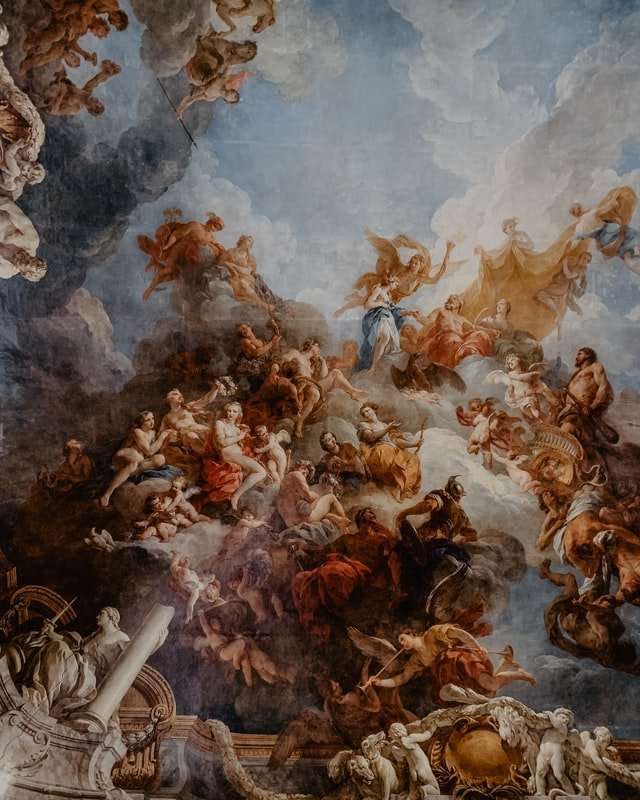In the art world there are many questions about how long it takes to create an art piece and what goes into that process. This blog gives you a glimpse into the mind of an artist in the creative process of a painting or drawing. You will get insight into the artist’s thought process as well as a look at where and when the piece was created.
Tara Ament, is a local artist who lives in Eugene and has been creating art for over ten years. She has had several solo and group shows in Lane County, Oregon. She is currently working on a series of abstract paintings that she hopes to exhibit in the future. To find out more about her or her artwork visit: www.tarament.com
Professional artists go through a lot of trouble to create their art and spend a lot of time on the more mundane aspects of their career.
To be successful as an artist, you have to have many skills that don’t necessarily come with the talent of making art. You need to be able to write grant proposals, navigate the gallery world, network with people and know how to promote yourself.
This blog will explore the process of creating art from soup to nuts. I’ll also talk about some of the things that go on outside of my studio like teaching and writing classes.
I’ll write about such topics as how much time I spend on various parts of my art, how I come up with ideas for projects, how long it takes me to make pieces and what it’s like showing my work in galleries.
There are many factors that go into creating an art piece. The most important ones are how you want the artwork to look like, if you have a deadline, and how much effort you want to put in it. Here I will discuss the first one.
You can ask yourself the following questions:
What do I want my artwork to look like? What kind of style? How detailed? What colors? What kind of emotion do I want my viewers to feel when they look at my work?
All these questions come down to one thing: what is your purpose for creating this particular piece of art? If you have no purpose or deadline, then there is absolutely no point in rushing through this process. The point of creating art is to enjoy the process, and having fun while doing something counts as a win already.
If you do have some sort of deadline, however, then you will probably have to rush through the process, which means sacrificing quality for speed. You might feel that it’s worth sacrificing quality for speed if it makes a difference in your grades or other things like that. But keep in mind that simply getting a high grade does not automatically make your art good. It’s not just about the grade; it’s about the experience and self-satisf
Art is an industry that does not have a clock. When you are working on commissions, you have to make sure you meet deadlines, of course. But that is not always the case.
Sometimes, when you are working on a personal art piece, there are no deadlines at all. It can take months or years to complete a piece because it is not urgent or necessary to create something new.
The pressure of the industry can make it look like the process has to be rushed, but there are ways to work slowly and still get your art done.
One way is to spend more time planning and drawing than actually working with tools and materials. I have found that this helps me a lot because I feel like I am getting much more done in the end.
Another way is to break down the project into more manageable pieces so that you don’t feel so overwhelmed by the amount of work ahead of you.
It’s important to estimate how long a project will take and then know if it’s possible to finish the project in that time. Estimating how long a project will take is sometimes difficult, especially when you are new – so I’ve put together some tips on estimating how long a project will take.
Image Credit: Flaviu Cazacu
What do you get when you combine an art studio with a zoo? In this case, you get an art studio called Zoo Studio.
The inspiration for the name comes from the fact that we have many animals in our studio. They are all wild animals and they are all rehabilitated by our team at the National Wildlife Rehabilitation Center. They work with injured, sick, or orphaned animals from around the country. The animals at the zoo are permanent residents of the studio—they cannot survive in the wild anymore due to their injuries or illnesses.
Tours of the studio include a chance to meet some of our animal friends up close. We hope that by learning about how these animals live and what is being done to help them, you will be inspired to help us protect endangered species in their natural habitats. You can also see paintings and sculptures by talented American artists and purchase them directly from their creators!
We will be updating this blog weekly with new posts about what is going on in the studio! To find out more about Zoo Studio, please visit www.zoo-studio.com!”
Proving that an artwork is original is not an easy task. If you have a work of art that you believe is original, then a forensic expert can look at it and tell you whether or not it was copied from someone else’s work. You don’t need to hire a forensic expert to tell the difference between the Mona Lisa and any random painting; only if you think your painting might be a lost Leonardo would you bother.
The typical question in disputes involving art is how much the artist copied from someone else’s work. The answer is not much: painters, sculptors, and poets are expected to do some copying. When Shakespeare copies lines from other plays, we don’t accuse him of plagiarism. When Picasso copies African masks, we don’t say he stole from African artists — we say he was influenced by African artists. Which is to say we understand that creation comes from building on what came before.
In other words, when we compare two works of art, originality isn’t an all-or-nothing matter but a matter of degree. There’s a big difference between copying just enough to get caught and copying so much that no one cares if you got caught.



